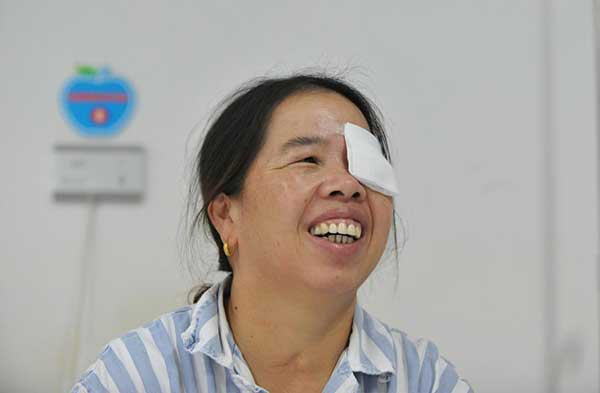Bio-engineered pig corneas help Chinese see anew
 |
|
[Photo/Xinhua] |
Bio-engineered corneas made from pigs'eyes may help millions of Chinese patients to see again, ophthalmologists have said.
A 14-year-old boy regained his sight after receiving a pig cornea transplant on Feb. 25, according to Yuan Jin of Sun Yat-sen University ophthalmology center, in the southern Chinese city of Guangzhou.
The boy injured his right eye with a firecracker during New Year celebrations.
"He developed ulcer in his right eye and had lost his sight before the transplant. A week after the transplant, he had regained some vision. In the future his sight may be close to normal," said Yuan.
The cornea is the eye's outermost transparent layer. Every year, more than five million Chinese patients are blinded by cornea disorders or damage. The demand for cornea transplants far exceeds supply, so bio-engineered solutions could restore the eyesight of millions of Chinese,Yuan said.
Research into the use of animal corneas began in 2003 at Ainier Cornea Engineering Company, Shenzhen and the Fourth Military Medical University, Xi'an. After success in animal tests, clinical tests were carried out in 2010 on 100 patients in four hospitals in Beijing and Wuhan, with 94 patients regaining some or all of their vision. Pig corneas proved just as successful as human, said Zhang Mingchang, director of ophthalmology at Wuhan Union Hospital.
Forty-seven patients who received the transplant at Wuhan Union Hospital have fully recovered their eyesight, said Zhang. Artificial corneas are not a miracle cure for all disorders though. They cannot help, for example, with severe penetration wounds.
Zhang Bin, director of Ainier Cornea, said initial trials were conducted using tissue from chickens, cows, ducks, geese, monkeys and sheep before pigs were selected. Some corneas may carry viruses and pig tissue was found to have the lowest risk of infection in the recipient. The bio-mechanical properties of human and pig corneas are very similar, he said.
The company gained China Food and Drug Administration approval in April last year for "Acornea," the first such commercial product to be accredited, and it has since gone into mass production.
"It takes 20 days of quite complex processes from removing the tissue from the donor to produce one Acornea," Zhang said.


















